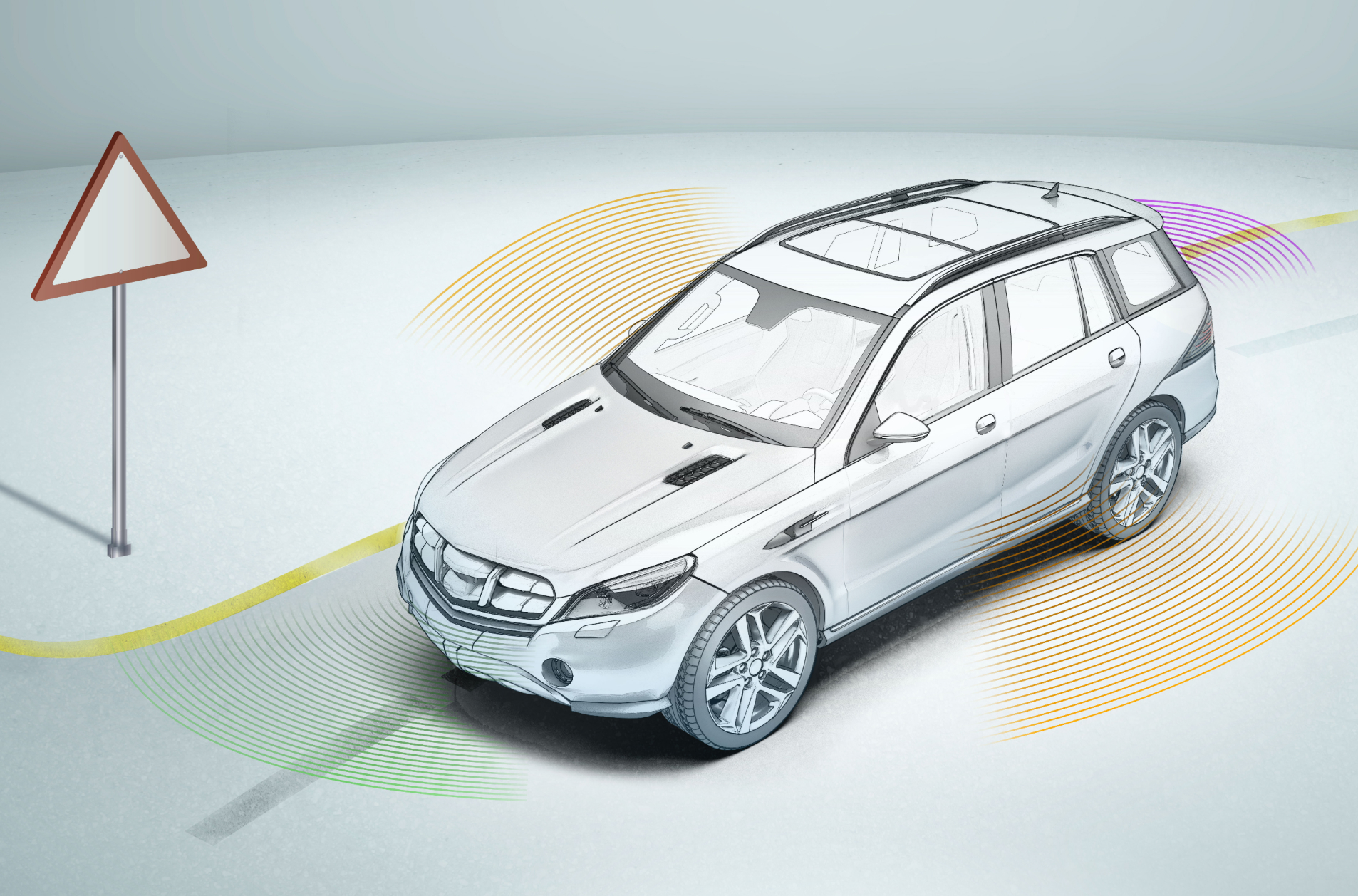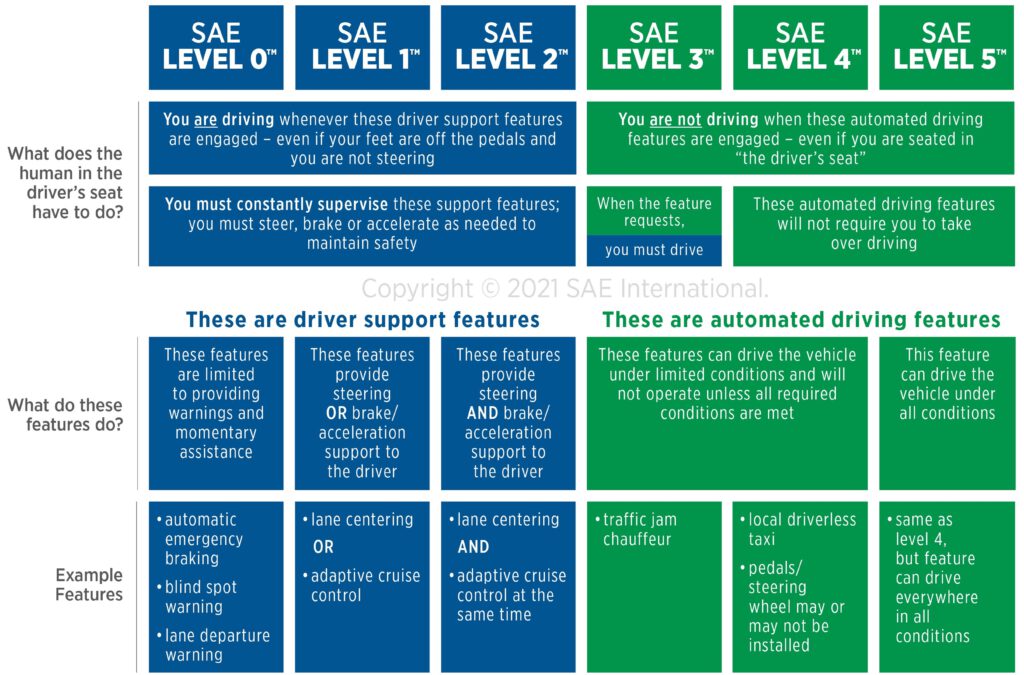
Airbag
Seat belts
Screens
CAmaras
Sensors and radars
Other systems

CAmaras
Sensors and radars
Other systems
The progressive increase in digitization and sensorization of vehicles is leading conventional safety to evolve towards the concept of INTEGRAL SAFETY. This arises from the evolution of both active and passive safety systems and their increasingly significant interaction. In this sense, early research indicates that new concepts and preventive/pre-crash safety systems are poised to revolutionize the world of safety. They not only bring their own intrinsic improvements but also enhance existing safety systems by establishing a link between active and passive functions, leveraging their potential interactions, resulting in comprehensive safety systems.

In terms of active safety, technologies such as the integration of sensors that enable communication and automation of vehicles, as well as the lighting system, stand out.
Regarding passive safety, adaptive systems that adjust to the impact type and the passengers involved are noteworthy. Examples include restraint systems based on airbags and seat belts, which adapt based on information generated by various vehicle sensors. These systems can adjust to the actual impact event and provide a more individualized response depending on occupant weight, size, seating position, and the severity of the impact.
On the other hand, Advanced Driver Assistance Systems (ADAS) contribute to making driving much safer, reliable, and, above all, ergonomic. These highly sophisticated systems, with advanced technological levels, aim to continually reduce the number of traffic accidents, injuries, and casualties.
The sector is constantly innovating to equip vehicles with an increasing number of driving assistance systems. These technological advancements significantly enhance active safety and progressively move us towards fully autonomous driving.
Source: Society of Automotive Engineers-SAE

ABS: Allows adjusting the braking force to prevent the tires from losing grip on the road.
ESC: Electronic Stability Control works in conjunction with other systems, centralizing the functions of traction control and the ABS and EBD brake systems. Its action provides protection in the event of sudden skids of the front, rear, or both axles, minimizing effects and helping the driver regain control of the steering wheel.
Emergency braking system: Designed to reduce the vehicle’s speed to a point where minimal damage is caused.
Blind spot detection: Some of these systems will sound an alarm if they detect the presence of an object within a blind spot, while others include cameras that can transmit an image to the cabin console.
Lane departure warning systems: To ensure that a vehicle does not accidentally veer out of its lane. If the system determines that the vehicle is drifting, an alarm will sound so that the driver can take corrective action in time to avoid colliding with another vehicle or leaving the road.
Hill descent control: Typically, these systems work by activating the brakes to automatically decelerate the vehicle, functioning through the same basic mechanism as ABS, TCS, and other technologies. Some hill descent control systems allow speed modification through the cruise control system and can usually be overridden by pressing the brake or accelerator.
Lane-keeping assistance systems: Go beyond lane departure warning systems and can take small corrective actions without the driver’s intervention.
Lane change assistance system: Provides safe conditions for driving by alerting the driver to potential dangers when changing lanes. With a warning distance of 70 meters, the driver has enough time to interrupt the lane-changing maneuver in time. This function enhances safety, especially on highways.
Adaptive cruise control: Automatically maintains a preset speed chosen by the driver, without the need for continuous acceleration. The vehicle will automatically decelerate or accelerate in response to the actions of the car or truck in front of it.
Stop & go: Halts the engine operation whenever the vehicle comes to a standstill, such as at traffic lights and in traffic jams, to eliminate noise emissions, reduce carbon dioxide emissions, and decrease fuel consumption.
Parking assistant: Designed to help the driver parallel park, providing guidance on when to turn the steering wheel and when to stop.
Adaptive light control: Allows headlights to pivot to better illuminate the road in curves and other circumstances.
Cross-traffic alert: This system warns the driver if there are vehicles crossing behind during a reverse maneuver, such as backing out of a parking space.
Driver drowsiness detection: Uses various methods to determine if the driver’s attention is starting to drift from the road. Some of these systems detect eye blinking, while others use technology similar to lane departure warning systems.
Traffic jam assistant: Operates by combining three technologies: the automatic transmission to allow the car to shift gears as needed, the adaptive cruise control (ACC) system for maintaining a safe distance and adjusting speed as necessary, and the lane-keeping system to steer the wheel and keep the car within the lane.
Automatic parking: Designed to assist the driver in parallel parking, handling all tasks automatically.
Traffic jam chauffeur: The system can be activated in a traffic jam scenario at a maximum speed of 60 km/h on highways and highway-like roads. It detects the slow-driving vehicle in front and manages both longitudinal and lateral vehicle control. A later version of this function may include lane-changing capability. The driver must deliberately activate the system but does not need to constantly monitor it and can override or turn it off at any time. In the event of a takeover request from the system, the driver has sufficient lead time to orient themselves and assume the driving task. If the driver does not take control, the system will transition to a reduced-risk condition, meaning it will bring the vehicle to a safe stop.
Highway chauffeur: The vehicle can travel up to 130 km/h on highways or highway-like roads, including taking an exit or stopping and moving in a traffic jam without the driver making any maneuvers. The driver must deliberately activate the system but does not need to constantly monitor it and can override or turn it off at any time. In the event of a takeover request from the system, the driver has sufficient lead time to orient themselves and assume the driving task. If the driver does not take control, the system will transition to a reduced-risk condition, meaning it will bring the vehicle to a safe stop. If possible, depending on traffic conditions and system capabilities, reduced-risk conditions may include necessary lane changes to stop on the shoulder, e.g., emergency lane or roadside.
Urban and suburban pilot: Highly automated driving up to the legal speed limit in urban and suburban areas. The system can be activated by the driver in all traffic conditions and can be overridden or turned off at any time.
Highway pilot: Highly automated driving up to 130 km/h on highways or highway-like roads, from entrance to exit, in all lanes, including overtaking and lane changes. The driver must deliberately activate the system but does not need to constantly monitor it and can override or turn it off at any time. There is no system request for the driver to take over when the system is in normal operating conditions (i.e., on the highway), allowing for sleep. In the event of a situation where the driver would attempt to end the trip or simply stop on the highway (e.g., extreme weather conditions) and the driver does not take control, the system has the capability to exit the highway and safely park the vehicle.
The fully automated vehicle can handle all driving from point A to B without any passenger intervention. The driver can override or turn off the system at any time.